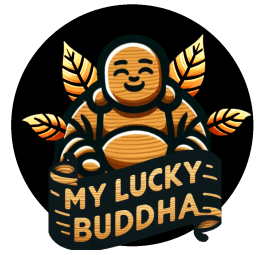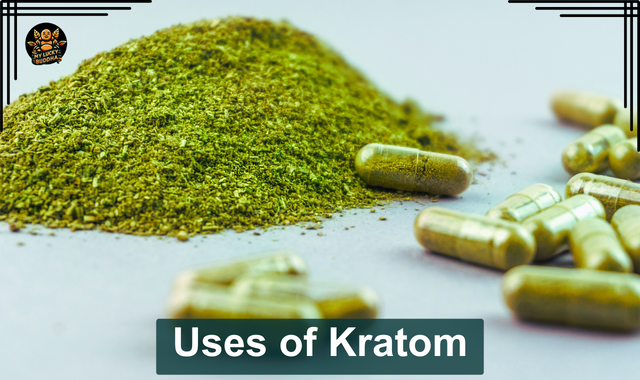Uses of Kratom: Understanding Methods and Practices
Kratom, also known as Mitragyna speciosa, is a tropical tree native to Southeast Asia. Traditionally, people in the region have chewed kratom leaves for enhanced energy, much like coffee. In modern times, the use of kratom has expanded internationally. Some consume it for its energizing effects at lower doses, while others seek it for the sedative experience that higher doses can provide. It’s also used by individuals attempting to increase motivation and focus less on discomfort.
The methods of ingesting kratom vary. The leaves can be dried and brewed into teas, ground into powders to be encapsulated, or extracted for liquid products. Amidst its growing popularity, kratom remains controversial, with debates surrounding its potential benefits and risks. It’s not widely regulated, and the varying legal standings in different countries affect its availability. As a result, consumers often look to online vendors or local shops in places where the sale of kratom is legal.
Key Takeaways
- Kratom is a natural substance traditionally used to boost energy in Southeast Asia.
- Kratom is consumed in various forms, including tea, powder, capsules, and extracts.
- The legality and regulation of kratom vary worldwide, influencing its accessibility.
Traditional and Modern Uses
Kratom, a plant indigenous to Southeast Asia, has a history of usage for its various properties affecting relief, mood, and energy levels. Now, its consumption extends globally in forms like tea, capsules, and powder, catering to different needs. Here’s how kratom is utilized for relief and revitalization:
Stimulant Effects for a Boost and Enhanced Mood
Those seeking a natural boost to energy and mood may turn to kratom. Comparable in effects to CBD, kratom has been favorably reviewed by laborers, resulting in an increase in stamina and a reduction in discomfort.
- Mood improvement: Enhances well-being, relieves worries
- Energy enhancement: Natural, akin to CBD effects
How to Consume Kratom
Kratom’s versatility allows for various methods of consumption, each with its own set of considerations regarding dosage and preparation. It’s important for users to start with a lower dose and adjust as needed to find their ideal balance.
Methods of Use
Kratom Tea:
- Preparation: Users often steep crushed kratom leaves in a tea bag or blend kratom powder with another type of tea.
- Dosage: Control over the amount consumed can be accurately maintained.
Toss & Wash Method:
- Method: This involves taking a spoonful of kratom powder and washing it down with a liquid.
- Experience: This method is fast, but may not be the most pleasant due to the powder’s taste and texture.
Chewing Leaves:
- Tradition: This is the historical practice in the regions where kratom originates.
- Approach: Direct chewing of the leaves provides a natural way to ingest kratom.
Capsules:
- Convenience: Capsules offer an easy method of consumption with pre-measured doses.
- Dosage Control: Capsule form generally allows less flexibility with dosage adjustments.
Kratom Extracts:
- Potency: Extracts are concentrated forms of kratom, making them more potent.
- Usage: Due to their strength, extracts must be measured carefully to avoid excessive dosing.
Pre-made Preparations:
- Variety: Includes teas, capsules, and tinctures that come ready to consume.
- Dosage: These preparations offer a convenient way to manage dosage while consuming.
Remember that individual needs and sensitivity levels differ, so starting with a smaller dose and gradually increasing is key to finding what works best. The onset and duration of effects can vary based on the method of ingestion and dosage. Users seeking to avoid potential discomfort or taste issues with raw kratom powder can explore alternative methods, such as capsules or pre-made tea forms.
Comparison to Other Supplements
When comparing Kratom to other supplements, it’s essential to understand that each has distinct properties, uses, and effects. Kratom, known for its unique alkaloid profile, contrasts with other natural supplements on the market in terms of both its potential benefits and risks.
Alternatives to Kratom
- Kava: Often taken as a beverage or extract, Kava is known for its relaxing properties without affecting mental clarity.
- CBD: Available in oils, edibles, and topical applications, CBD interacts with the body’s endocannabinoid system to potentially provide relaxion and help with insomnia without psychoactive effects.
- Caffeine/Coffee: Typically consumed in beverages, caffeine is recognized for its stimulating effects on the nervous system, often resulting in increased alertness and energy.
- Nicotine: Found in tobacco products, it is used for its stimulating properties but is highly addictive and associated with numerous health risks.
- Ashwagandha: This adaptogenic herb can be taken in powdered form or as a supplement and is frequently used potential for stress reduction and improving vitality.
- Turmeric: Usually ingested as a spice in cooking or as a supplement, turmeric contains curcumin, which is claimed to have anti-inflammatory and antioxidant properties.
- Lions Mane: A mushroom known for it’s potential to enhance brain function, support nerve health, and improve overall mental well-being.
- Akuamma: Derived from the Picralima nitida plant in West Africa, where it’s seeds thought to manage discomfort and promote relaxation.
- Blue Lotus: A water lily originating from Egypt, is said to have mild euphoric and calming effects.
Each of these supplements has distinct methods of preparation and dosing considerations, with Kratom presenting a broader range due to its stimulating to sedative effects, depending on the amount used. These characteristics are crucial for consumers to understand, as they make informed choices regarding their use of natural supplements.
Where to Buy
When embarking on the search for kratom, it’s essential to prioritize vendors that have secured a strong reputation for quality. Online platforms have become a reliable source for purchasing kratom, offering a vast selection of the product. Quality control and customer satisfaction stand as the pillars upon which to assess a potential source. Here’s what potential buyers should consider:
- Vendor Reputation: Their standing in the market, often reflected in customer testimonials and reviews, can be a great place to start.
- Product Selection: A variety of strains may be available, allowing for personal preference in potency and effects.
- Quality Assurance: High-quality vendors will offer transparency regarding the source and quality of their kratom.
- Customer Support: Efficient and friendly customer service indicates good business practices and customer care.
- Free Samples: Vendors who stand by their products offer free samples for their potential customers to try before they buy.
- Pricing: Compare costs between different vendors, but be cautious of prices that seem too good to be true, as they may indicate inferior quality. In 2024, good quality kratom should cost between $65 and $110 per kilo. Prices below $50 may suggest inferior quality, while prices above $110 could indicate price gouging.
To ensure that you are making an informed decision, consider the following non-exhaustive checklist when evaluating a vendor:
- Do they provide comprehensive product descriptions?
- Are customer reviews prominently displayed and mostly positive?
- Is there evidence of lab testing for safety and purity?
- Can you easily contact them for queries or concerns?
- Are their shipping and return policies clearly stated and reasonable?
By taking these points into account, individuals can navigate to reputable sources and make educated purchases of kratom with confidence. Remember, it is always recommended to conduct research and shop smartly for any health-related products online.
Frequently Asked Questions
When exploring the use of kratom, one encounters several common inquiries. This section aims to address these queries with factual and concise responses.
What are the common ways to consume kratom?
Kratom is typically ingested as a powder, which can be mixed into drinks, placed into capsules for swallowing, or used to make tea. Some individuals also chew fresh kratom leaves.
Can you describe the process for making kratom tea?
To make kratom tea, one simmers kratom powder or leaves in water for 10 to 20 minutes. The duration affects the strength and bitterness of the tea. After simmering, the mixture is strained to remove the solid particles.
What should someone consider when determining the dosage of kratom?
Determining the correct dosage of kratom involves several factors, including the user’s body weight, the strain of kratom, and the desired effects. New users should start with lower doses and gradually increase as needed. Always follow the dosage suggestions on the back of the bag or bottle. If there are no suggestions, we do not suggest buying from that vendor in the future.
What are the differences between kratom strains and their effects?
Kratom strains differ mainly in the color of their veins—red, white, or green. Red vein kratom is known for relaxation and relief; white vein for natural stimulation and increased attention to detail, and green vein for a balance of the two.
How do people use kratom for relaxation purposes?
For relaxation, users generally consume red vein kratom, either as a tea, powder mixed with a drink, or in capsule form. The strain is reputed for its potential to alleviate discomfort and promote calmness.
What methods are there for measuring kratom accurately?
Accurate measurement of kratom is crucial for safe usage. You can use a digital scale for precise measurements, or standardized measuring spoons when a scale isn’t available. Proper measurement helps in managing dosage effectively.
Disclaimer: The information provided in this article is for educational purposes only and does not constitute medical advice. Kratom is not intended to diagnose, treat, cure, or prevent any disease. Always consult with a healthcare professional before using any new supplement or substance. The legal status of Kratom varies, so please check local laws before purchasing or using it.


